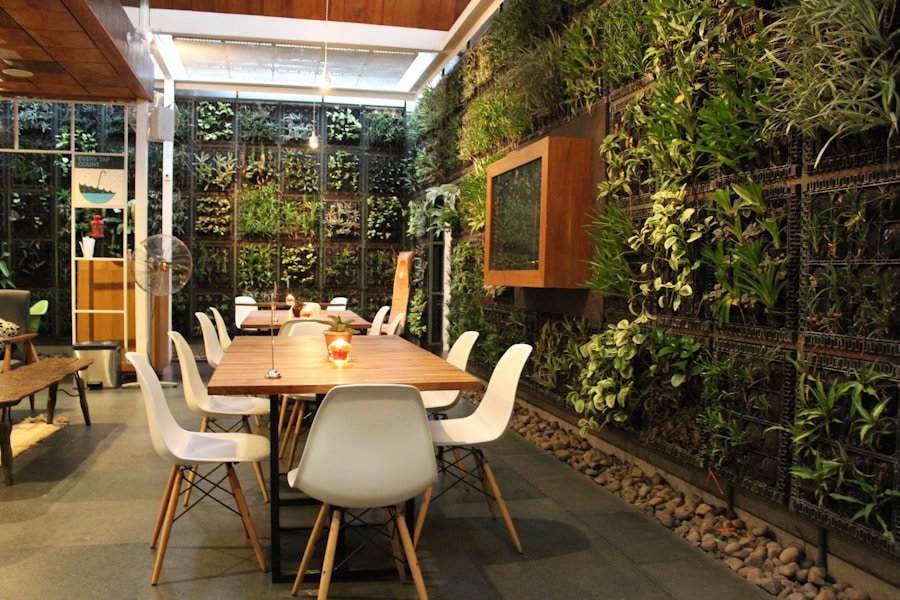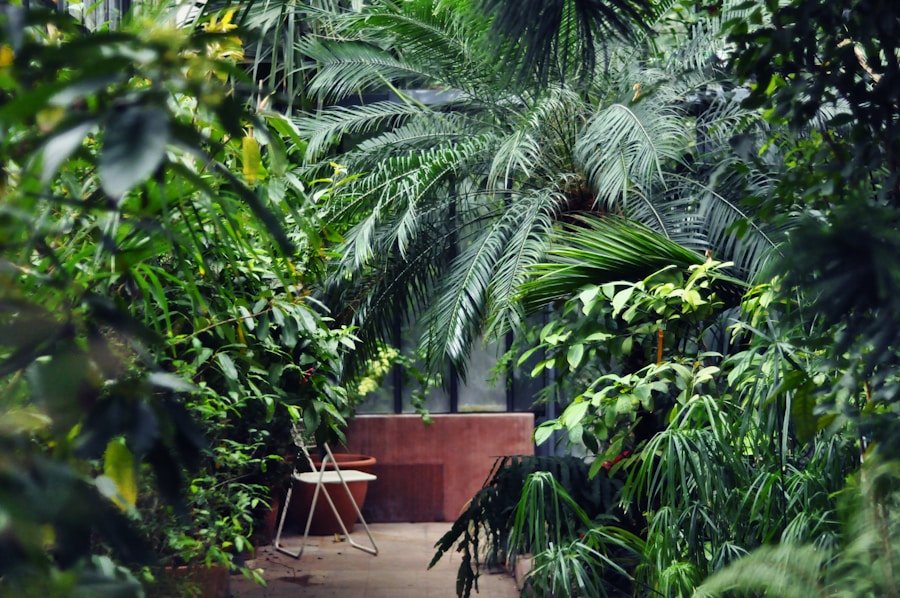This post may contain affiliate links. When you purchase through links on our site, we may earn an affiliate commission.
As I delve into the world of architecture and interior design, I find myself increasingly captivated by the concept of biophilic design. This innovative approach seeks to reconnect people with nature, fostering a sense of well-being and harmony in our built environments. The term “biophilia,” which translates to “love of life” or “love of living systems,” encapsulates the idea that humans have an innate affinity for the natural world.
In a time when urbanization and technology dominate our lives, biophilic design serves as a reminder of our deep-rooted connection to nature and the benefits it can bring to our physical and mental health. Incorporating biophilic principles into design not only enhances aesthetic appeal but also promotes sustainability and environmental consciousness. As I explore this fascinating field, I am struck by the myriad ways in which nature can be integrated into our living and working spaces.
From the use of natural materials to the incorporation of greenery, biophilic design encourages a holistic approach that prioritizes both human experience and ecological balance. By embracing this philosophy, I believe we can create environments that nurture our well-being while respecting the planet.
Key Takeaways
- Biophilic design focuses on connecting people with nature in the built environment
- Natural elements such as plants, water, and natural materials can be incorporated into design
- Maximizing natural light through large windows and skylights can improve well-being
- Utilizing natural materials like wood, stone, and bamboo can create a sense of connection to nature
- Creating green spaces such as gardens and living walls can improve air quality and provide a sense of tranquility
- Embracing views of nature through windows and outdoor spaces can reduce stress and improve mental well-being
Incorporating Natural Elements
One of the most compelling aspects of biophilic design is the incorporation of natural elements into our spaces. As I consider my own surroundings, I realize how transformative it can be to introduce features such as plants, water, and natural textures into a room. The presence of greenery, for instance, not only adds visual interest but also purifies the air and enhances mood.
I often find myself drawn to spaces adorned with lush foliage, where the vibrant colors and organic shapes create a sense of tranquility and vitality. Water features are another powerful element that can evoke a connection to nature. The sound of flowing water has a calming effect, making it an ideal addition to both indoor and outdoor spaces.
Whether it’s a small fountain in a garden or a larger water wall in an office lobby, these features can create a serene atmosphere that encourages relaxation and reflection. As I explore various design options, I am inspired by the idea that even small changes—like adding a few potted plants or a tabletop fountain—can significantly enhance the overall ambiance of a space.
Maximizing Natural Light

Natural light is a fundamental component of biophilic design that I find particularly compelling. The way sunlight filters through windows and illuminates a room can dramatically influence its mood and functionality. I have come to appreciate how maximizing natural light not only reduces reliance on artificial lighting but also fosters a deeper connection to the outside world.
Large windows, skylights, and open floor plans are just a few strategies that can be employed to invite more daylight into our spaces. In my own home, I have made a conscious effort to enhance natural light by choosing sheer window treatments and strategically placing mirrors to reflect sunlight. The result has been a brighter, more inviting atmosphere that energizes me throughout the day.
Additionally, I have noticed that spaces filled with natural light tend to feel more expansive and open, creating an environment that encourages creativity and productivity. By prioritizing natural light in design, I believe we can cultivate spaces that not only look beautiful but also support our well-being.
Utilizing Natural Materials
| Material | Benefits | Challenges |
|---|---|---|
| Wood | Renewable, biodegradable, and energy efficient | Susceptible to rot and pests if not treated |
| Bamboo | Fast-growing, strong, and sustainable | May require chemical treatment for durability |
| Cork | Renewable, sound-absorbing, and hypoallergenic | Can be easily damaged if not properly maintained |
The choice of materials in design plays a crucial role in achieving a biophilic aesthetic. As I explore various options, I am drawn to the warmth and authenticity of natural materials such as wood, stone, and clay. These elements not only add texture and depth to a space but also evoke a sense of grounding and connection to the earth.
I find that incorporating materials with organic qualities can create an inviting atmosphere that resonates with our innate desire for authenticity. In my own projects, I have sought to prioritize sustainable materials that reflect the beauty of nature while minimizing environmental impact. For instance, reclaimed wood not only adds character but also tells a story of its past life, creating a unique narrative within the space.
Similarly, using locally sourced stone can enhance the connection to the surrounding landscape, fostering a sense of place. By embracing natural materials in design, I believe we can create environments that are not only visually appealing but also environmentally responsible.
Creating Green Spaces
The creation of green spaces is another essential aspect of biophilic design that resonates deeply with me. Whether it’s an expansive garden or a small balcony filled with plants, these areas provide opportunities for individuals to engage with nature in meaningful ways. I have always found solace in green spaces, where the sights and sounds of nature can rejuvenate the spirit and promote relaxation.
As I consider how to incorporate these elements into my designs, I am inspired by the idea that even small pockets of greenery can have a profound impact on our well-being. In urban environments, where access to nature may be limited, creating green spaces becomes even more critical. Rooftop gardens, vertical gardens, and community parks are just a few examples of how we can bring nature into densely populated areas.
I am particularly excited by the potential for biophilic design to transform urban landscapes into vibrant ecosystems that support biodiversity while providing residents with much-needed respite from the hustle and bustle of city life. By prioritizing green spaces in our designs, we can foster a sense of community and connection to nature that enriches our daily lives.
Embracing Views of Nature

Designing with Nature in Mind
As a designer, I strive to incorporate views of nature into my designs whenever possible. In my own living space, I’ve made it a priority to position furniture in a way that allows for unobstructed views of the outdoors. Large windows frame picturesque scenes that change with the seasons, reminding me of nature’s beauty and resilience.
Bringing the Outdoors In
When direct views are limited, incorporating artwork or photographs depicting natural landscapes can further enhance our connection to nature. By embracing views of nature in design, I believe we can create environments that uplift our spirits and foster a sense of belonging within the natural world.
A Transformative Approach to Design
In conclusion, biophilic design offers a transformative approach to creating spaces that nurture our well-being while honoring our connection to nature. By incorporating natural elements, maximizing light, utilizing sustainable materials, creating green spaces, and embracing views of nature, we can cultivate environments that inspire and rejuvenate us.
If you’re looking to transform your space with beautiful decorations, you may want to check out this article on A to Z Cozy Corner. It offers tips and ideas on how to incorporate biophilic design elements into your home decor. Creating a serene home environment is essential for overall well-being, and this article on A to Z Cozy Corner can help you achieve just that. And if you’re in need of some travel inspiration to further connect with nature, be sure to check out the travel escapes section on the same website.
FAQs
What is biophilic design?
Biophilic design is an approach to architecture and interior design that seeks to connect people with nature and natural elements. It incorporates natural light, vegetation, natural materials, and views of nature to create a more harmonious and productive living environment.
Why is biophilic design important for homes?
Biophilic design has been shown to have numerous benefits for occupants, including improved mental well-being, reduced stress, increased productivity, and better overall health. It also helps to create a more sustainable and environmentally friendly living space.
How can I incorporate biophilic design in my home?
There are many ways to incorporate biophilic design in your home, such as adding indoor plants, using natural materials like wood and stone, maximizing natural light, incorporating water features, and creating views of nature through windows and outdoor spaces.
What are some examples of biophilic design elements for homes?
Examples of biophilic design elements for homes include living walls or vertical gardens, large windows with views of nature, natural materials like bamboo flooring or reclaimed wood furniture, and water features such as indoor fountains or ponds.
Can biophilic design be incorporated in any style of home?
Yes, biophilic design can be incorporated into any style of home, whether it’s modern, traditional, or eclectic. The key is to focus on incorporating natural elements and creating a connection to nature, regardless of the overall aesthetic of the home.
Are there any cost-effective ways to incorporate biophilic design in a home?
Yes, there are cost-effective ways to incorporate biophilic design in a home, such as adding potted plants, using natural textiles like cotton and linen, incorporating natural light through skylights or strategically placed mirrors, and using natural finishes like stone or wood veneer.
What are the benefits of incorporating biophilic design in a home?
The benefits of incorporating biophilic design in a home include improved mental and physical well-being, reduced stress, increased productivity, better air quality, and a stronger connection to nature. It can also create a more visually appealing and inviting living space.
Can biophilic design help with sustainability in homes?
Yes, biophilic design can help with sustainability in homes by promoting the use of natural materials, maximizing natural light to reduce energy consumption, and incorporating indoor plants to improve air quality. It also encourages a deeper connection to the natural environment, which can lead to more sustainable lifestyle choices.
Are there any specific guidelines for incorporating biophilic design in homes?
While there are no strict guidelines for incorporating biophilic design in homes, it’s important to focus on creating a connection to nature through natural elements, maximizing natural light and views of nature, and incorporating greenery and water features. It’s also important to consider the specific needs and preferences of the occupants.

 using WordPress and
using WordPress and 
No responses yet